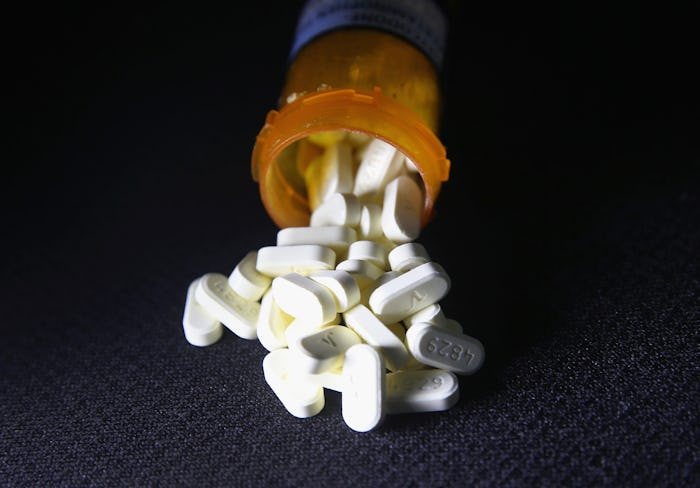Life

New Research Finds Opioid Poisoning In Toddlers Has Tripled In The Last 15 Years
The opioid epidemic in the United States has made headlines throughout 2016, and is considered one of the biggest public health crises that the nation faces. But new research indicates that it's not just adults who are at risk — but children. Opioid poisoning in toddlers has tripled in the last 15 years, and researchers aren't sure exactly how the tots are getting the medication.
Opiates, such as morphine, heroin, and prescription pain medication, have been the topic of an important conversation in the United States about drug abuse. While some who use the drugs do so recreationally and may get the drugs through illegal means, many people who come to abuse the medications obtain them through their doctor with a legal prescription, and began taking the medication in order to cope with pain — usually after an illness or injury, according to the NIH.
The U.S. Department of Health and Human Services reported that in 2014, more people died from drug overdoses than in any year prior, and the majority of the overdoses involved an opioid medication. Many also involved a synthetic opioid called fentanyl, which is sometimes used to "lace" recreational drugs, particularly heroin. Fentanyl on its own is more dangerous than other opiates because it takes so little of the drug to overdose, according to the CDC. Now that it's being mixed with other drugs, like heroin, it's become a driving force behind the epidemic in the U.S.
While the focus has long been on adult drug users, a new study published in JAMA on Monday shows that hospitalizations of adolescents and children who have overdosed on opiates have tripled in the last 15 years. The researchers looked at records in the Kids Inpatient Database (KID) from 44 states and found that the rate of hospitalizations due to opioid poisoning in teens 15 to 19 years old rose by 176 percent — and that the rate for children ages 1 to 4 was even higher: 205 percent.
The research was limited by the fact that the scientists reviewing the data didn't know if the children were given the drugs by an adult or if they ingested them accidentally. But, since the rate was so high, the next logical step would be to uncover where, when, and how kids access opioid medications.
One thing researchers do know is that over the last decade or so, prescriptions for opioid medications have nearly quadrupled, meaning kids and teens are just more likely to encounter them. And some of those prescriptions were given legally to kids and teens: last year the FDA approved the use of one opiate, Oxycotin, in kids as young as 11 who suffer from chronic pain. Some research indicates that any legitimate use of opioid medication during childhood can up a kids' risk of using the drugs non-medically later in life by up to one-third.
Accidental overdoses of any medication can put a child in grave danger, which is why it's important to keep any medication — prescription, over-the-counter, and even vitamins — where a child can't reach it. ABC News pointed out in a report earlier this year that those "child-proof" caps on medication aren't fool proof, so it's still important to store medication where kids can't get into it. The ABC report also showed that, in the U.S., as many as 160 kids land in the emergency room every day as a result of an accidental medication overdose. And, especially for kids who have ingested too high a dose of opiates, the results can be fatal.